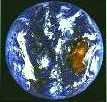 Thunda Pol
Thunda Pol Thunda Pol
Thunda Pol| Bearing from Terra (relative to Core) (degrees): |
310 |
| Distance from Terra: | 5.5 kpsc |
| Other location data: |
| Total Irradiation | (Terra = 1): | 1.12 |
| Distance from Star | (A.U): | 0.88 |
| (million km): | 132.11 | |
| Revolution | (Terran years): | 0.9106 |
| (Terran days): | 332.59 | |
| (Local days): | 332.73 | |
| Diameter | (Terra = 1): | 1.34 |
| (km): | 15,942.83 | |
| Mass | (Terra = 1): | 1.45 |
| Density | (g/cc): | 4.09 |
| (Terra = 1): | 0.74 | |
| Surface Gravity | (Terra = 1): | 1.00 |
| Length of Day | (hours): | 23.99 |
| Orbital Inclination | (degrees): | 5.68 |
| Moons | 1 | |
| Other |
| Primary: | |
| Spectral Class: | G |
| Mass: | 0.95 |
| Luminosity: | 0.87 |
|
Planet |
Name | Distance (million km) |
Revolution (Terran days) |
Revolution (Terran years) |
Type | Mass (Terra=1) |
Diameter (Terra = 1) |
Rotation (hours) |
Inclination (degrees) |
Moons |
|---|---|---|---|---|---|---|---|---|---|---|
| 1 | 25.40 | 28.05 | 0.08 | Venusian | 1.81 | 0.81 | 17.01 | 5.18 | 0 | |
| 2 | 40.65 | 56.77 | 0.16 | Rocky | 1.63 | 0.97 | 20.27 | 0.07 | 2 | |
| 3 | 71.13 | 131.41 | 0.36 | Asteroids | -- | -- | -- | -- | -- | |
| 4 | Thunda Pol | 132.11 | 332.59 | 0.91 | Habitable | 1.45 | 1.34 | 23.99 | 5.68 | 1 |
| 5 | 254.05 | 886.96 | 2.43 | Jovian | 60 | 10.90 | 4.23 | 1.91 | 14 | |
| 6 | 497.94 | 2433.81 | 6.66 | Asteroids | -- | -- | -- | -- | -- | |
| 7 | 985.71 | 6778.75 | 18.56 | Jovian | 49 | 8.85 | 4.87 | 1.93 | 6 | |
| 8 | 1961.26 | 19025.13 | 52.09 | Rocky | 0.80 | 0.57 | 17.41 | 2.36 | 0 |
| Founded: | 2137 CE |
| Social Characteristics: | |
| Population: |
Overview:
With a surface gravity exactly equal to Earth's, a day only 36
seconds shorter than Earth's, a similar year with similar seasons,
and 12% more irradiation, Thunda Pol was an excellent candidate
for an agricultural world. It was a major breadbasket for the
First Empire, and throughout the Interregnum
the planet remained rich and powerful. Not only was Thunda Pol
a leader in food production, but its many genetic labs produced
new and superior strains of food plants and animals.